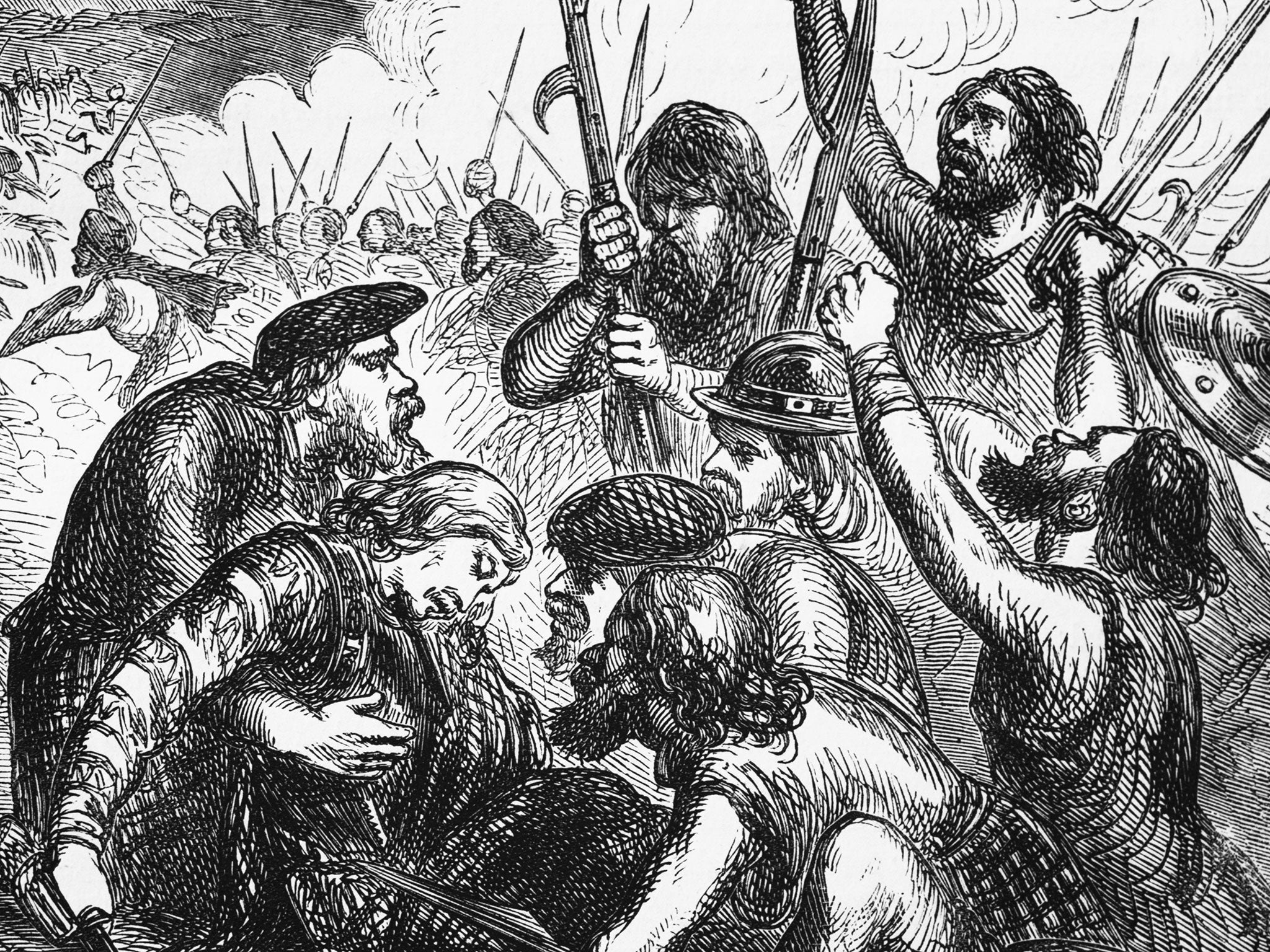A9: Archaeologists discover artefacts linked to Battle of Killiecrankie during road construction
Archaeological work carried out for A9 upgrade uncovers trove of artefacts from Jacobite rebellion

It is the longest road in Scotland, running for 273 miles up the spine of the country to the North Sea and providing one of the main transport links to the Highlands. Usually associated with frustratingly slow speeds and a high risk of accidents, the A9 now has a new claim to fame: a link with Scotland’s revolutionary past.
An archaeological survey carried out as part of a £3 billion project to turn 80 miles of the road into dual carriageway has uncovered dozens of artefacts linked to the Battle of Killiecrankie, which saw Jacobite rebels record a famous victory over government troops in 1689.
It is hoped that the discoveries – which include a copper alloy pendant, two buckles, part of the support for a sword belt, horse shoes, buttons and musket munitions – will help to shed further light on the skirmish which took place in a hilly pass near the A9’s current route.
Archaeologists who worked on the 1.5km-long site with the help of metal detectorists said patterns of munitions were clearly visible from the survey. The results show the exact positions taken up by the Government army commanded by General Hugh Mackay and the Jacobites, led by “Bonnie Dundee” John Graham, who was later immortalised in verse by Sir Walter Scott.
The two armies came face to face at Killiecrankie as they were attempting to reach the town of Blair Atholl, which they hoped to use as a strategic base for future operations. The Jacobites took up position on the higher ground and eventually emerged victorious, but lost 800 men in the process. The government side suffered 2,000 casualties.
“It’s probably the best preserved battlefield in Scotland – it’s remained relatively untouched for the past 300 years or so,” said Warren Bailie, project manager at Guard Archaeology Ltd, which carried out the survey. “The distributions of munitions, some of which have impacted people or been dropped, reflect the lines of the troops coming down the hill and those going up. It’s what every battlefield archaeologist is looking for, but most often doesn’t find.”
Long regarded as one of Scotland’s most dangerous roads, the A9 can cause frustration among drivers who find themselves unable to overtake for long stretches. The Scottish Government has attempted to reduce the number of accidents by introducing average speed cameras, which it says has reduced speeding.
The dualling of the road between Perth and Inverness began in September and is expected to be complete by 2025. The first section alone is expected to cost £35m and will require the excavation of more than 700,000 tonnes of earth, but it is hoped that the project will deliver social and economic benefits by providing a better link with the Highlands.
“Our work to dual the A9 will bring undoubted improvements for road users and will allow us to refine our road designs for the future, but has also opened a window into Scotland’s past,” Transport Minister Derek Mackay said on 3 March as he announced the discoveries.
“Thanks to the survey work, experts are shedding more light on the Battle of Killiecrankie which took place over 300 years ago, bringing ‘Bonnie Dundee’s’ Jacobite victory to life. They are able to offer more information on the battle including the possible route soldiers took during the battle, potential cavalry positions, where the key skirmishes and close quarters fighting took place, and the likely retreating route taken by the fleeing government forces.”
Subscribe to Independent Premium to bookmark this article
Want to bookmark your favourite articles and stories to read or reference later? Start your Independent Premium subscription today.

Join our commenting forum
Join thought-provoking conversations, follow other Independent readers and see their replies